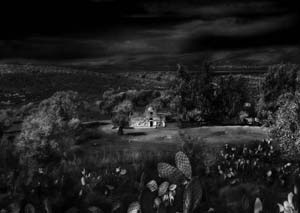
|
THE CHILDREN OF TIME
 Rabbi Samson Raphael hirsch once wrote: "The catechism of the Jew is his calendar."
Rabbi Samson Raphael hirsch once wrote: "The catechism of the Jew is his calendar."
God communicates with us through the days, the months, and the years. nothing would seem more evanescent and transitory than the agency of time - "here today and gone tomorrow." But because God has made the days, the months, and the years the instruments of his will, they are more imperishable and more accessible than any priest, monument, or temple. Priests die, monuments decay, temples and altars fall to pieces, but time remains forever. A priest can minister to but a few. Monuments and temples require you to visit them. (And usually we need their comfort most when we are not drawn to them or when depression dooms us to isolation.) not so the "children" of Time: Shabbat, Yom Tov, Rosh Chodesh. They do not wait for us to come to them; they come to us unannounced - and you cannot refuse them. like children, they throw their arms around us and we cannot stop their holy embrace. They find us whether we are in the full flight of success or the depths of depression. They find us whether we are on a desert island or in the teeming pandemonium of the metropolis. They find us in health and they visit us on our sickbed. The Jewish calendar has two dual cycles: a dual cycle in the year and a dual cycle in the day. One of the yearly cycles begins in Tishrei in the autumn and one begins in nissan in the spring. One of the cycles of day begins at night: "And it was evening and it was morning..." This is the cycle of Creation itself. The other cycle is that of the Beit haMikdash, the holy Temple where everything commences with the first light of day. This autumn-year is the cycle by which we count the years of creation, of worldly matters. But there is another year, a year that begins in nissan - a spring-year. This is the year of the Jewish people. The year that begins with the redemption. This is the year by which we count the Jewish months and its festivals. These two dual cycles stand as two opposites: Of death and life. Of extinction and resurrection. Of the transitory and the eternal. If we eliminate the Jewish spark from our lives, all the world starts in the darkness of autumn and goes toward the darkness of autumn. Without that Jewish spark, the day begins in darkness and goes toward darkness. no matter how high the noon sun of material success, everything flows from night inexorably toward night, toward a blossomless and darkening autumn. Without that Jewish spark, the wreckage of Time proclaims our lives but a brief walk between two darknesses. But the Jewish world is the world of spring. A world that begins in day and ends in day. A world that proclaims that nothing is by chance, that everything is infused with an everlasting life force, and all is directed to an eternal spring of an eternal world. This Spring-world teaches us that even sadness and bereavement are transformed into joy, for this world is merely an antechamber to a great palace of light; there is no grief over a transcendent moment that has passed, for the most fleeting second is an everlasting blossom in the garland of perfection. It teaches us that even in the midst of the storm of a deep midwinter's night, redemption flourishes, making its home where there is perpetual spring and day. This is the spring cycle's message to the autumn cycle. This is the day's message to the night. This is Judaism's message to the world. however, before the idea of the eternal, of the Spring-world, can take hold in our hearts, we must first be able to hear the trumpet of the Autumn-world - the shofar. At the beginning of each year of our mortal pilgrimage, Tishrei confronts us. Tishrei challenges the illusion that strength will never wane, that greatness is permanent, that joy and pleasure are unassailable. Before we can count from the spring, we must first learn from the Autumn-world to build the sukka of our lives amidst the transitory and perishable, on a soil cleared of deception and illusion. A FINAL JOURNEY
wrapped in the garmentwith which he daily greeted his Maker, he begins his final journey. leaving behind the crackling leaves of an underfoot Autumn-world, the bittersweet adieu-view of a world receding. the garment that once he wore now is wearing him on this his last journey, born, like an eternal scroll of loving life to the Gateway. More articles available at Ohr Somayach's website. |